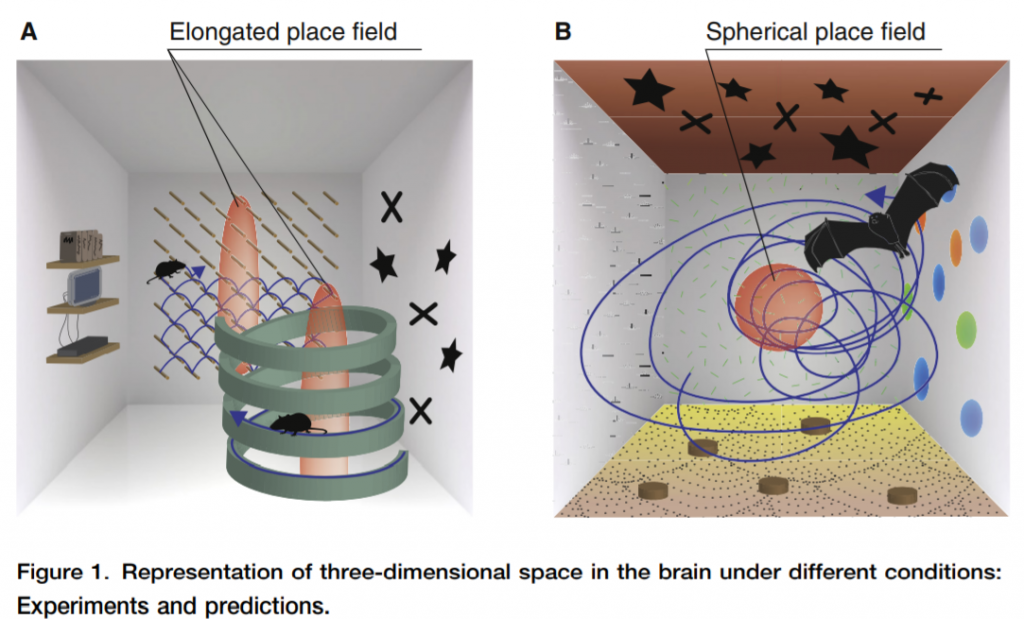How is three-dimensional space encoded in the brain?
We live in a three-dimensional world. Questions about how we perceive and represent the three-dimensional world that surrounds us have occupied humankind for centuries.
Some of Nachum Ulanovsky’s group main results in recent years included: the finding that in flight, 3D hippocampal place cells have nearly spherical 3D place fields. Recordings in the bat presubiculum revealed 3D head-direction tuning in many cells, which could serve as a 3D compass; and surprisingly, this compass followed a toroidal coordinate system – providing an interesting biological solution to the discontinuity and non-commutativity problems associated with a standard spherical coordinate system.

Fig source: Ulanovsky N Curr. Biol. 2011.
More info can be found on the Nachum Ulanovsky’s group website.

